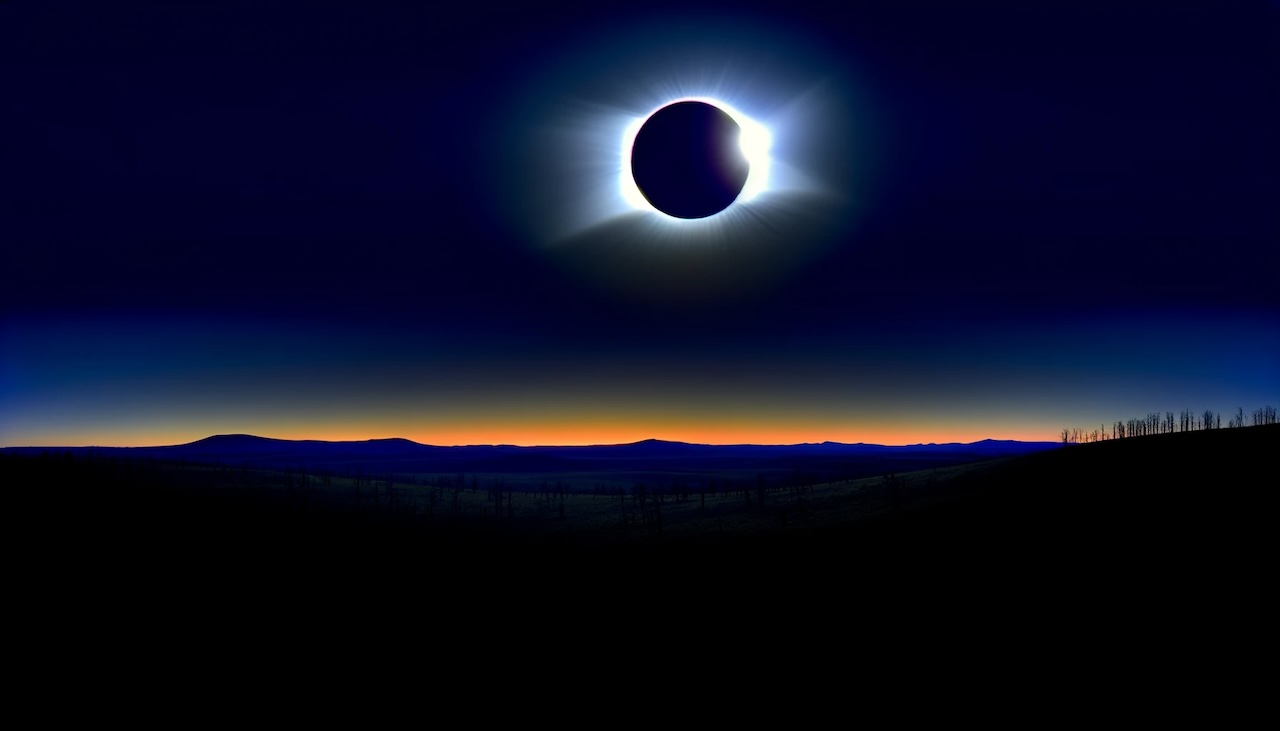Few natural events are as awe-inspiring as a total solar eclipse—a moment when the sky darkens in broad daylight, stars become visible, and the Sun disappears behind the Moon in a breathtaking celestial dance. But what exactly causes this rare event, and when can you see one in Japan?
Let’s explore the science behind total solar eclipses, the meaning behind the Japanese term Kaiki Nisshoku, and how to prepare for the next one.
What Is a Total Solar Eclipse?
A total solar eclipse occurs when the Moon passes directly between the Earth and the Sun, completely covering the Sun’s disk for a brief moment. During this time, the Moon’s shadow falls on the Earth, turning day into night in the path of totality.
Key characteristics:
- Occurs only during the new moon phase
- Requires a precise alignment of the Sun, Moon, and Earth
- Causes a dramatic drop in light and temperature for several minutes
While partial solar eclipses are more common, total eclipses are rare due to the specific alignment required. That’s what makes them so special—and so worth seeing.
How Does a Total Solar Eclipse Happen?
For a total solar eclipse to occur, three conditions must be met:
- New Moon Phase – The Moon must be between the Earth and the Sun
- Orbital Alignment – The Moon must cross the line that connects the Sun and the Earth
- Shadow Contact – The umbra (the Moon’s darkest shadow) must reach the Earth’s surface
Most months, the Moon passes slightly above or below the Sun as seen from Earth, so no eclipse occurs. But when everything aligns just right, the result is a few minutes of cosmic magic.
When Will Japan See Its Next Total Solar Eclipse?
Mark your calendars: September 2, 2035 will bring the next total solar eclipse visible in Japan.
- Partial eclipse: Will be visible throughout most of the country
- Total eclipse: Will be visible in select regions, especially in Kanto and Hokuriku
This will be a rare and major astronomical event in Japan, so make sure to plan ahead and travel to a location within the path of totality if you want to witness the full experience.
What Does “Kaiki Nisshoku” Mean in Japanese?
In Japanese, a total solar eclipse is called 皆既日食 (Kaiki Nisshoku).
- 皆 (kai) means “all” or “entire”
- 既 (ki) means “already finished” or “completely”
- Together, 皆既 (kaiki) suggests that the Sun has been entirely covered or exhausted
- 日食 (nisshoku) simply means “solar eclipse”
So the phrase “Kaiki Nisshoku” conveys the idea of the Sun being completely devoured—a fitting description for such a dramatic event.
What Is It Called in Other Languages?
While each language has its own poetic take, most terms translate directly to “total eclipse of the Sun”:
- English: Total Solar Eclipse
- German: Totale Sonnenfinsternis
- French: Éclipse totale de Soleil
Despite cultural differences, the wonder of a total eclipse is universal.
Conclusion: A Rare Spectacle Worth Experiencing
A total solar eclipse is more than just a scientific phenomenon—it’s a reminder of the vastness and beauty of the universe. The precise alignment of celestial bodies, the fleeting darkness, and the sudden appearance of the Sun’s corona make it a truly unforgettable experience.
With Japan’s next total eclipse set for 2035, now is the perfect time to learn, prepare, and get excited. Whether you’re watching from your hometown or traveling to the path of totality, don’t miss your chance to witness this spectacular event.





















